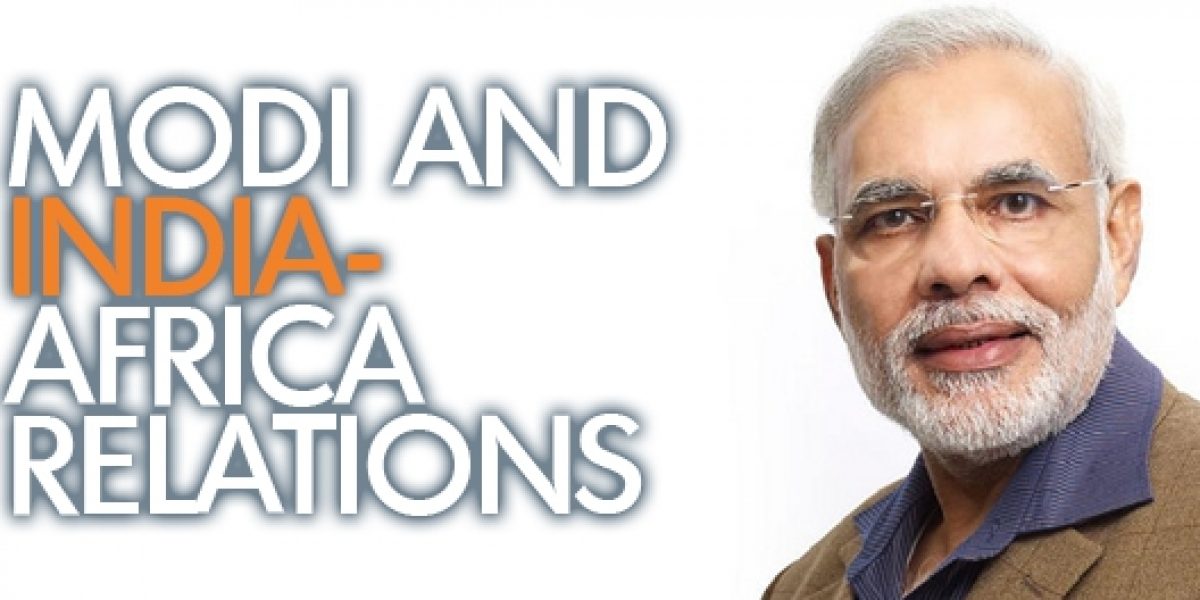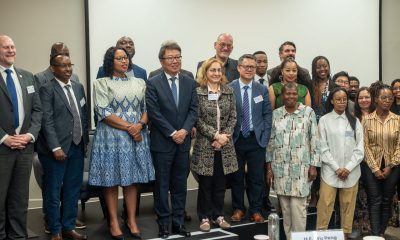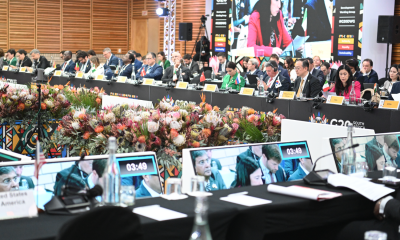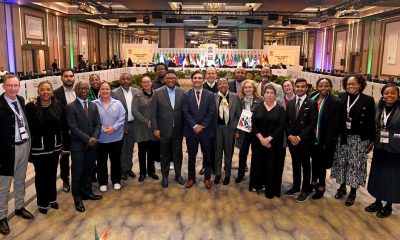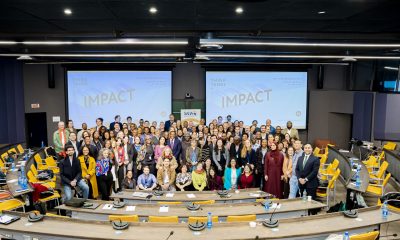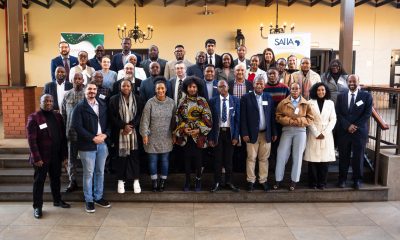Working paper
Entitled ‘Bringing Geo-Economics Back In: The India–Africa Forum Summit, Modi’s New Foreign Policy Agenda and the Implications for Africa, the working paper covers a range of relevant areas of the India-Africa relationship:
- Indian foreign policy prior to 2014
- India’s relations with Africa prior to 2014
- Modi’s foreign policy vision
- Fitting Africa into Modi’s foreign and economic policy
- Engaging with Africa’s agenda: imperatives for a sustainable partnership
Download the paper ‘Bringing Geo-Economics Back In: The India–Africa Forum Summit, Modi’s New Foreign Policy Agenda and the Implications for Africa by Elizabeth Sidiropoulos and Chris Alden.
New analysis
‘INDIA-AFRICA RELATIONS UNDER MODI: MORE GEO-ECONOMIC?’
by Elizabeth Sidiropoulos
India-Africa relations are enjoying an unprecedented renaissance, founded on shared economic interests and longstanding historical ties. Two-way trade has grown from US$5.3 billion in 2001 to some US$70 billion in 2013, though it still remains much below China’s trade with the continent (which stands at over US$200 billion). Technical cooperation and training are set to further expand the ambit of shared interests.
For the African Union (AU) and its 54 member states, the upcoming Third India-Africa Forum Summit (IAFS) in October 2015 will be an important indicator of New Delhi’s commitment to continue to promote closer economic ties in ways that reflect the changing policies of Prime Minister Narendra Modi’s government and building on the development affinities between the two regions.
Surveying Modi’s foreign policy activities over the last eighteen months however provides somewhat sober reading for African interests. Modi’s travels abroad have highlighted the clear geo-economic prism through which he has prioritised his foreign engagements and those of his government. Running in parallel is his domestic agenda, although somewhat stalled, which aims to further unravel the License Raj, improve the business environment and grow India’s manufacturing sector. Indeed, since Modi’s electoral victory in May 2014, the world has witnessed an almost peripatetic foreign policy outreach by India in its region and beyond. India has been characterised as a swing state, being courted by the US, China and Japan, as geostrategic considerations accelerate on the Asian landmass. India has recognised the economic importance of its relations with China, notwithstanding the two countries’ areas of dispute around borders.
Large business delegations have accompanied each of his sojourns abroad, underscoring that the resolution of outstanding disputes, such as those with Bangladesh, can lay the foundation for closer economic cooperation between neighbours. More broadly, Modi has sought to spearhead or revitalise India’s economic relations with Central Asia and the Indian Ocean littoral states, where the Indian Ocean Rim Association (IORA) is also being elevated in importance. China’s promotion of a new initiative – ‘One Belt, One Road’ – which is defining President Xi Jinping’s foreign relations across Eurasia and the Indian and Pacific Oceans, has not gone unnoticed.
Against this backdrop, the Third IAFS is but one dimension of a multi-pronged foreign policy where the African continent occupies thus far only the outer circles of India’s external focus. This is not to say that the continent does not hold a number of important cards for India, but it is to recognise that the Modi government clearly prioritises affirming India’s dominance in its region and at the global level. .
Modi’s major focus is economic diplomacy that advances Indian economic activity at home, encapsulated in the slogan ‘Make in India’. It is now a crucial programme designed to facilitate investment, foster innovation, enhance skill development, protect intellectual property and build best-in-class manufacturing infrastructure in India so that India can become part of the global supply chain. It covers a wide range of sectors from automobiles and components, electronic systems, and food processing to biotechnology, defence manufacturing, media and entertainment and space. The potential impact of such an initiative on Africa’s prioritisation of beneficiation (i.e., adding value to raw materials rather than exporting them to other countries to do that and re-importing such goods at higher prices) and industrialisation to reduce its commodity trade dependency is one that African states and the African Union need to take note of, for its potential impacts on such cooperation with India.
Trade, technology and training have characterised the Forum since its inception in 2009. These are all very important for African states that have benefited, for example, from the Pan-African e-network rolled out by India as part of the New Partnership for Africa’s Development (Nepad). This project is one of the biggest ever undertaken in Africa in distance education and tele-medicine. It involves 47 countries in Africa, connecting states through a satellite and fibre-optic network to India and to each other to enable access to and sharing of expertise. The cost of the project, which was covered by a grant from the Indian government, was about US$125 million. However, Modi’s geopolitical orientation and emphasis on the domestic economy raise questions about the India-Africa relationship’s priorities in the future.
On the other hand, the AU and its member states have adopted two key policy documents in recent years that outline the continent’s objectives in economic, security and political terms, and which are the bases for engagement with external partners.
First, Agenda 2063, the overarching 50-year vision for the continent – aiming to end conflicts by 2020, eradicate poverty by 2025, double intra-African trade by 2022, transform economies through industrialisation, and create jobs – envisions ‘an integrated, prosperous and peaceful Africa, driven by its own citizens and representing a dynamic force in the global arena’. A skills revolution, science and technology, world-class infrastructure and the blue and green economies are important dimensions of this.
Second, as Africa rediscovers its maritime domain, it has also adopted the 2050 Africa Integrated Maritime Strategy (AIMS). This reflects a growing realisation of Africa’s geopolitical significance in a changing environment and the need for African states to exert greater control of their geographical space (including water). Fundamental to the strategy is the peaceful settlement of disputes. But its aim is to mobilise states to build a thriving maritime economy and realise the full potential of sea-based activities in an environmentally sustainable manner. AIMS aspires to a Combined Exclusive Maritime Zone, improved integrated coastal zone management, coherence between sectoral policies within and between regional economic communities, and fundamentally right of access to sea and freedom of transit goods for landlocked states.
Both Agenda 2063 and 2050 AIMS are springboards to identifying areas of cooperation with external actors. The case for helping Africa achieve its objectives should be rooted in a clear articulation of Africa’s geopolitical importance for a country such as India. Such importance is rooted in Africa’s energy abundance, its geographical positioning on the western littoral of the Indian Ocean, its own home-grown radicalism that may deepen linkages with other groups in western Asia if not checked, and its economic opportunities.
What changes might be viable in the IAFS to ensure that its mandate addresses the evolving priorities of India, the AU and African states? There are two areas worth highlighting.
The first is in the political terrain. It may be time to expand the focus of the Forum to include a platform for political and security dialogue that would reflect changing geostrategic trends in the two regions, as well as mutual concerns about the spread of radicalism. From Boko Haram in Nigeria to al-Shabaab in the Horn of Africa, African governments are battling non-state actors across the Sahel belt from west to east. Many of these states are politically fragile, with limited capacities to effectively respond to this threat, which also has a transnational dimension. Cooperation between India and the AU in the exchange of lessons learnt and effective instruments would also serve to elevate the mechanism to one that encompasses all dimensions of the relationship between Africa and India, rather than focusing on an element that sees Africa largely through a development cooperation prism.
The second area is the maritime and environmental dimension, which has both economic and political components. Both the AU and India recognise the importance of maritime security. This includes reducing piracy but equally, effective resource management. African states, by and large, have very limited capacity in this domain. Greater collaboration between India and African littoral states in this area would be beneficial to all and can only be tackled effectively if all participate. However, marine and coastal resources can also play a significant role in realising economic benefits, and spearheading the blue economy (which in IORA has now become a priority). India’s particular interest may be the Indian Ocean, but there can be significant benefits (and soft power projection) from working with states on both sides of the continent in this regard. Africa’s blue economy vision has resonance in Modi’s own espousal of a ‘blue revolution’ for India.
These are not issues that previously have been on the IAFS’s agenda. However, as India’s foreign policy takes on a more geo-economic orientation and Africa itself is gearing up to tackle its economic and political challenges and become more central to global debates, a review of the IAFS to ensure its continued political relevance beyond the domain of what one might call South-South Cooperation, would not be amiss.
This article was first published on the website of Brookings India.

